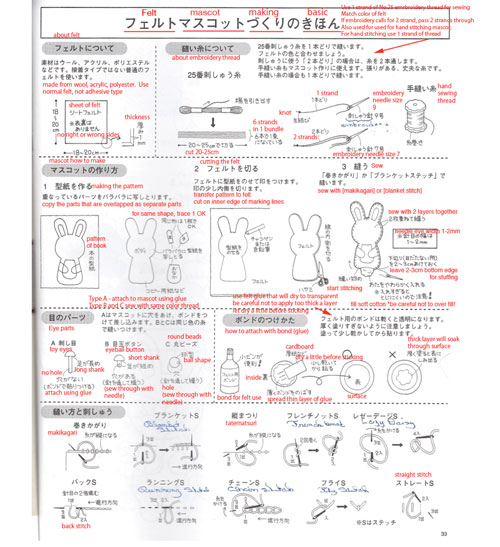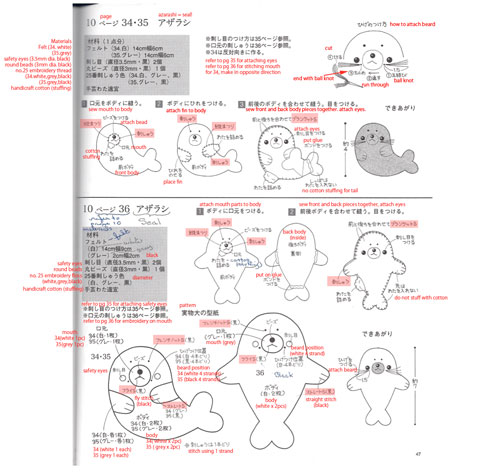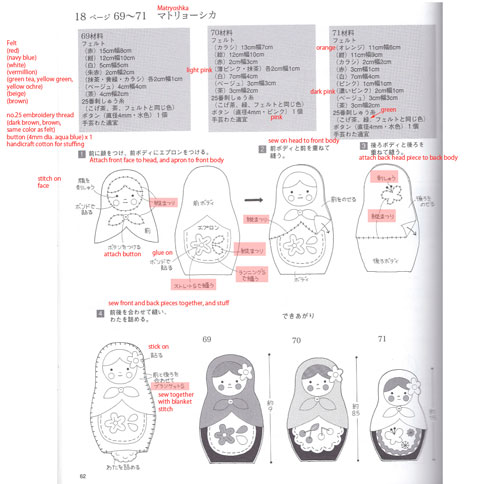I’ve been getting more translation requests lately so those of you who have emailed me, please be patient. They are all in the queue! 🙂
Today’s translation request is from Judy and look at this cute book! Easy, Cute Handmade Felt Mascots by Boutique-Sha (ISBN 978-4-8347-3396-9)
Felt mascots making basic instructions (see below for links to stitch examples)
I found the instructions relatively easy to understand because of the diagrams. The only two main things are the type of stitches and colors of felt used.
The parts highlighted in pink boxes are those that refer to type of stitch that should be used. Judy did a great job in translating some of the terms already (on the first page where it talks about the basics of making felt mascots. There were two stitches that do not have english translations. I am not very well versed in the terminology of hand-stitching so I found some pictures to show the type of stitches. Those of you who can tell what these stitches are named in English do leave a comment below.
巻きかがり縫い http://tanosimu.biz/paxtutikiso/makikagari.html
縦まつり http://tanosimu.biz/paxtutikiso/tatematuri.html
Edited to Add (Judy kindly emailed me after I posted this, with information on the stitches I linked to above. Thanks Judy!) :
“The first link shows the whipstitch (a type of overcast stitch), and the second stitch shows the ladder stitch. The whipstitch is typically used to close seams or finish edges when it’s okay for the stitches to show. The ladder stitch is typically used to close seams (often for stuffed animals) when you want the stitching to be as invisible as possible. “
As for the colors, I learned some new terms today, and found a great resource for colors! http://www.colordic.org/colorsample – This website contains lots of color samples, especially the more traditionally used Japanese colors in Japanese names.
For example, in the translated pattern above, there are a few colors which may sound or look quite similar.
抹茶色 (green tea color) http://www.colordic.org/colorsample/2144.html
緑黄色 (yellow-green color) http://www.colordic.org/colorsample/2142.html
カラシ (yellow-ochre) http://www.colordic.org/colorsample/2183.html
But felt dolls are meant to be colorful anyway so I guess it is not really necessary to stick to the exact colors. Would it even be possible to find so many shades of felt? 🙂
Anyway, I hope this helped you Judy, happy sewing!





So cute, I imagine if you add a little tip for the finger these would make cute finger puppets for the little ones!
lovely post! just exactly what i needed! i was wondering if should i put the eyes first before stuffing or after stuffing. that has been my question for quite a while. nonetheless, i love this entry! 🙂
Hi, it doesn’t really say in the instructions. In fact it shows the stuffing and eyes being done within the same step but no mention of before or after. I guess sewing on the eyes first will be easier ?